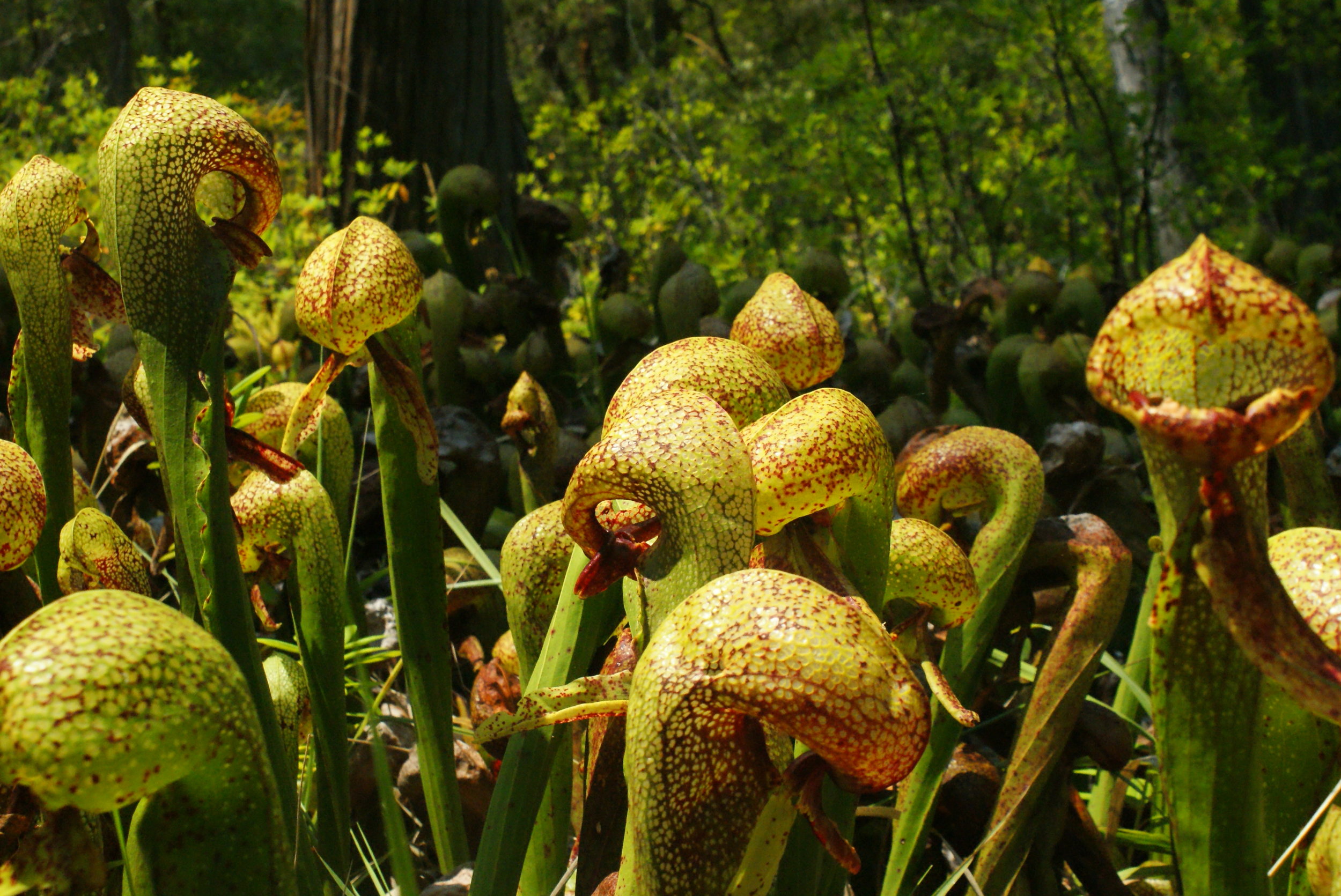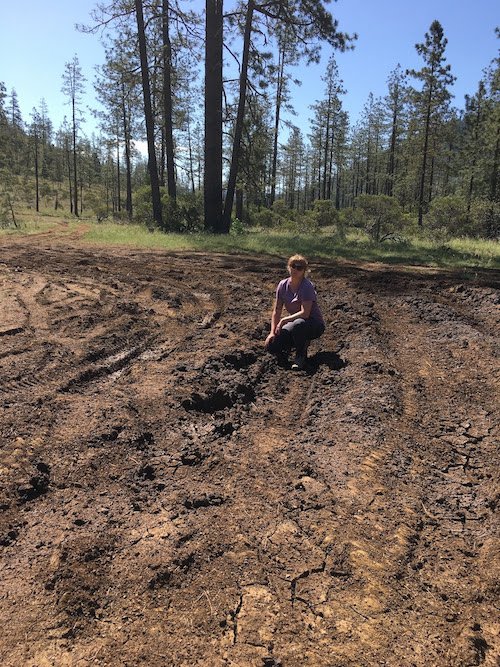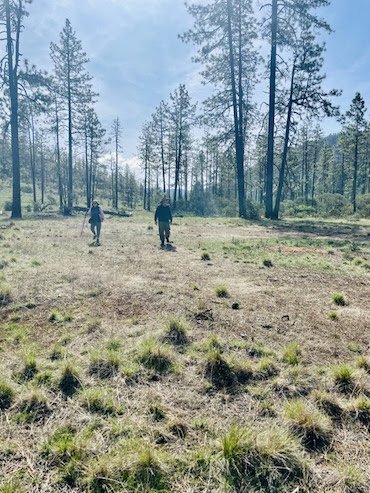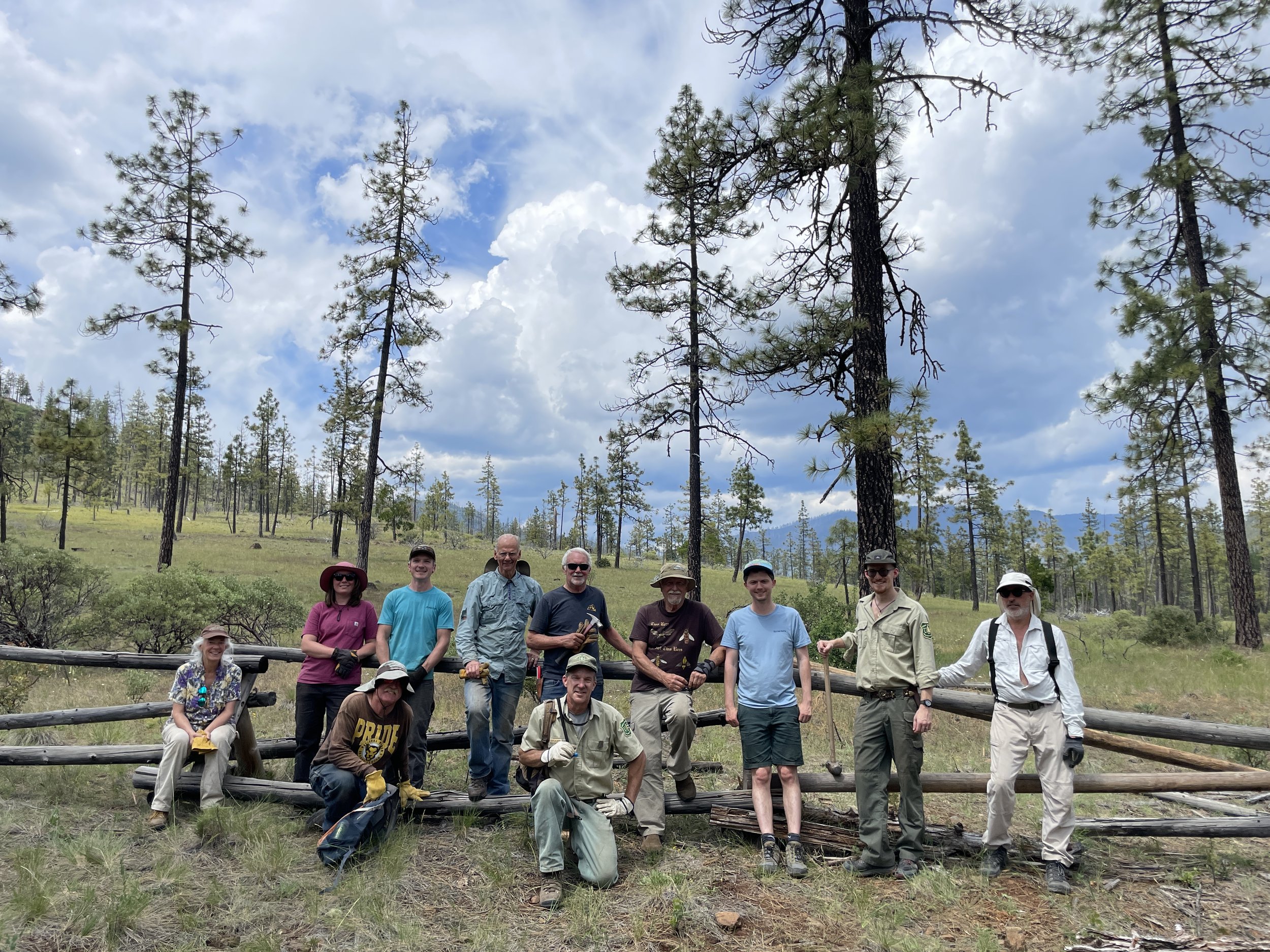Six years of stewardship at Eight Dollar Mountain and Days Gulch Botanical Areas
Written by Allee Gustafson on June 23rd, 2023.
A fen of Darlingtonia Californica, aka the cobra lily.
If you're a nature lover like me, you'll be thrilled to know about the Eight Dollar Mountain and Days Gulch Botanical Areas in Southern Oregon. These two areas are home to a diverse range of flora and fauna making them perfect destinations for hiking, birdwatching, and wildflower spotting. Mining scars are still visible in the serpentine soil from before the days of protection, as are several unusual plants like a carnivorous plant found in boggy areas called the cobra lily, and an endemic plant found only in Josephine and Curry counties called Howell’s Mariposa Lily.
Eight Dollar Mountain Botanical Area is located just outside of Cave Junction and is known for its unique geological formations and the rare plant species that call it home. The botanical area covers over 7,000 acres and includes a network of hiking trails that lead through a variety of habitats from oak savannas to mixed conifer forests.
A view of the botanical areas where the Illinois River cuts through.
Days Gulch Botanical Area is located just a few miles north of Eight Dollar Mountain and covers over 3,500 acres of public land. The area is known for its wildflower displays which are best admired in the spring and early summer.
Both of these botanical areas face threats to their survival. From garbage dumping to off road vehicle disturbances, many years of human impact have led to loss of biodiversity and degradation of the pristine nature that makes a botanical area so special. That’s where KS Wild’s Public Lands and You (PLAY) program comes in! Our PLAY program connects KS Wild staffers, community members, and volunteers with the US Forest Service to help manage and mitigate the harmful impacts to these botanical gems.
Our PLAY program, bolstered by the support of a few incredible volunteers, recently had the opportunity to participate in a stewardship day at both Eight Dollar Mountain and Days Gulch Botanical Areas. Thanks to our partnership with the US Forest Service and the hard work of the volunteer community members, we were able to make a real difference in these beautiful natural areas.
KS Wild PLAY program volunteers posing with the new botanical sign they installed!
One of our main projects for the day was installing a new interpretive sign at the Days Gulch Botanical Area turnout where the Howell's Mariposa lily is studied. This sign will help educate visitors about the unique plant life in the area and the importance of preserving it.
In addition to the new signage, we installed 30 fence rails at Days Gulch, repairing approximately 80 meters of fence that is used to keep off road vehicles from traveling over the sensitive plants that depend on the protection of the botanical area. We also concealed an illegal route around a botanical gate, cleaned up the day use parking area, and removed roughly 140 pounds of garbage! As part of our efforts to educate recreationists about the importance of protecting the botanical areas, we conducted photo monitoring and installed 3 signs alerting users that botanical areas are off limits to vehicles. Overall, it was a rewarding and productive day, and it's wonderful to see so many people coming together to preserve and protect the beauty and significance of these areas. As stewards of public lands, we have a continuous responsibility to preserve and care for threatened botanical areas.
More to come…
Our plan for the upcoming year is to place important botanical signs within Eight Dollar and Days Gulch Botanical Areas along TJ Howell's Botanical Drive. Thanks to our partnership with the US Forest Service and the dedication of our volunteers, we have achieved a remarkable restoration success story for the various species that reside here. Our work is never done, but we are committed to ensuring that this place remains a thriving home for these species. With the help of a recent Oregon Community Foundation grant and support from community members like you, we can continue our work. If protecting wildflower meadows sound interesting to you, please sign up to join us in our efforts at this incredible botanical hotspot.
Pictured above: Before and after photos at Eight Dollar Mountain Botanical Area. (Left: Photo of OHV damage taken in 2019. Right: Photo taken in 2022 of native plant regrowth and notable restoration taken place after years of consistent work.)
Volunteers work with the USFS to repair the buck-and-rail fence that protects the botanical areas.
We thank our amazing group of volunteers who make this important work possible!







